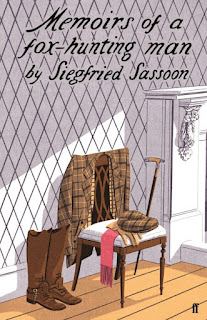A Portrait of a Marriage
In Ireland, 16 June marks a special day on the cultural calendar. Every year literary celebrants and misfits alike flock to the streets of Dublin to embark on a journey: to re-trace time and time again the goings-about-town of a fictional character from James Joyce's Ulysses, none other than Mr Leopold Bloom.
“Bloomsday” is a direct reference to Joyce's most famous work and as it happens, marks another special occasion: the day James first met his future wife, Nora Barnacle, a woman he adored throughout his life. Conceiving Ulysses, he wished to immortalise their initial get-together in his art.
Joyce's grand profession of his love for Nora on the world stage is a plotline straight from a romantic novel. With the annual celebrations of Bloomsday, the story of their marriage has belonged to the public for a long time. Little did this literary pair realise that in 1981 the writer Edna O'Brien — Ireland's biggest Joyce fan — would produce a small book in the US that mused on the their life together, warts and all.
This was nothing new. The late publication of Joyce's uncensored letters in the mid-1970s had strengthened the claims of the Ulyssean obscenity trials in America and revealed a new facet of his personality to the world — one that was fetish-laden, obsessive, even neurotic.
And what about Nora? We have to imagine that her letters back were more the same, that they were just as (in)famously lurid in their erotic details. Nowadays their correspondence provides humorous reading, but during the mid-twentieth century Joyce’s letters had shook the literary establishment, even stimulating embarrassment from the viewpoint of Joyce’s family, especially his grandson and literary rightsholder, Stephen Joyce.
The result of O'Brien's clear admiration for Joyce is, on the other hand, courageous, coherent — frankly beautiful. If the publication of Joyce's letters ever tarnished his posthumous reputation (which if ever still stands strong), then O'Brien's slim book provides a corrective to this passionate, intimate, and often wild relationship; she represents it as a kind of spiritual communion.
A Portrait of a Marriage is episodic. O'Brien clips together a string of snapshots showing the married couple in various poses, collating an admirable range that encompasses all their emotional states, from high to low. Like a professional photographer, her snapshots are well-developed, and she invites us to observe, to watch.
Take the early days of the relationship when a young James the "timoneer" dreams of Nora. "He went in as a deep-sea diver must go, to discover everything about her" (p. 18). Before this, O'Brien takes a dive herself — only this time she is analysing. The relationship was "a case of physical and mental transport", that is, a way of transcending Ireland; "and this young girl was a summons to his blood" (p. 17). It’s the sort of language that lends this account its lyrical intensity.
Like so O'Brien's non-fictional style comes across as magical, the whole book a show of linguistic acrobatics — an Aladdin's cave of poetic phrasing and Joycean allusion. On the latter, for instance, O'Brien peppers her paragraphs with direct sentences from Ulysses. (Like Joyce himself, she forgets to use quotation marks, so the words become her own. Joyce always viewed quotation marks as "lumpy" things.) Only the most astute readers will pick these sentences up: "God becomes man becomes fish becomes barnacle goose becomes feather bed mountain" being directly shoplifted from Stephen Dedalus's monologue on Sandymount Strand, the third episode of Ulysses. It's as if O'Brien subsumes Joyce's literary energy to become one mind, one being.
Safe to say this book is an inspired piece of writing — less a scholarly monograph and more a creative exercise. Ablaze with love for her subject, O'Brien trailblazes through the Joyce's marriage from its gestation to its death with James's early passing.
Yet she never struggles to find meaning in the Joyces' life together. At times O'Brien offers a plucky statement, Baconian in its conception. For instance describing a young James in a wandering mood who strays from his love for Nora, O'Brien makes a general remark on love's woes: "Never far from the throes of love are the fangs of jealousy" — a jealousy that James arguably turned into a constructive effort, for he would later "put it to great literary purpose" (p. 41; p. 45). The conception of Exiles, Ulysses, and that village well of madness, Finnegan's Wake, all owe their collective existence to Joyce's marital troubles . . .
Or so we are told. Because of course, when writing a literary biography, the author is always searching for their subject's struggle, adhering to a well-versed meta-thesis that all art springs from personal adversity, an argument O'Brien convincingly exercises here. She subscribes to a biographical reading of these texts and quite importantly, re-writes Nora Barnacle back into the fold of Joyce's literary achievements. Nora famously never read any books, but certainly cared for James' efforts. For without Nora, there would be no Joyce (at least not the totemic figure we know him as today).
This is a song of literature's
human elements, of its deep rootedness in the sights, sounds, and stenches of
everyday life, both its pleasantries and pains. This is a story of man and
wife, artist and muse — or in O'Brien's final words: "Men and their
yogeybogeybox. Women and their wiles." (p. 49). Read it both for its beauty and sonorous imagination.
Source:
JAMES & NORA: PORTRAIT OF JOYCE'S MARRIAGE. By Edna O'Brien. Pp 62. London: Weidenfield & Nicolson, 2020. 978-1-4746-1681-2.
 |
| The couple in Zurich (from the UB James Joyce collection, the State University of New York). |


Comments
Post a Comment